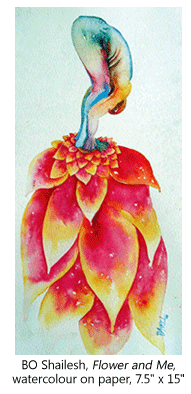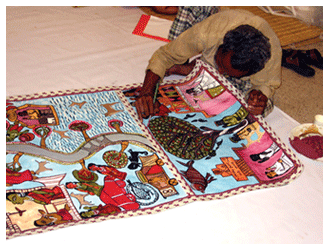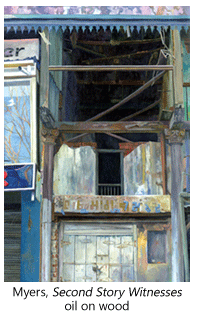- Prelude
- Editorial
- A Conversation with Jagdish Swaminathan
- Seeing is Very Important………
- Tormented Delineations and Violent Deformations
- Bikash Bhattacharjee: Subverting the Seen
- Bridging Western and Indian Modern Art: Francis Newton Souza
- Contesting National and the State: K K Hebbar's Modernist Project
- The Allegory of Return into the Crucial Courtyard
- Knowing Raza
- The Old Story Teller
- Beautiful and Bizarre: Art of Arpita Singh
- Feeling the Presence in Absence! Remembering Prabhakar Barwe
- Waterman's Ideal Fountain Pen
- Peepli Live: the Comic Satire Stripping off the Reality of Contemporary India
- Age of Aristocracy: Georgian Furniture
- Faking It - Our Own Fake Scams
- Scandalous Art and the “Global” Factor
- The Composed and Dignified Styles in Chinese Culture
- Visual Ventures into New Horizons: An Overview of Indian Modern Art Scenario
- The Top, Middle and Bottom Ends
- Top 5 Indian Artists by Sales Volume
- What Happened and What's Forthcoming
- The Month that was
- NESEA : A Colourful Mosaic
- Mumbai Art Sighting
- Art Events Kolkata
- Musings from Chennai
- Art Bengaluru
- Khoj, Kolkata Boat Project
- What a Summit!
- Ganesh Haloi at Art Motif
- The Other Self by Anupam Sud at Art Heritage, New Delhi
- Baul Fakir Utsav at Jadavpur
- Printmaking Workshop
- World's Greatest Never Before Seen Toy and Train Collection
- Previews
- In the News
- Christies: Jewellery Auction at South Kesington, London
ART news & views
Musings from Chennai
Volume: 3 Issue No: 13 Month: 2 Year: 2011
December 2010 – January 2011
by Vaishnavi Ramamathan

 Apparao Galleries presented The Synchronic Fire, an exhibition of bronze sculptures focusing on the chilli by Kumari Nahappan. While its flavour is essential for food, the chilli inhabits a liminal space since it is either kept at the threshold of houses to ward off evil or used while cooking and later thrown away after the meal. However in this exhibition, chillies of different kinds occupied the centre stage. The chilli, which defines people in ways that are often not acknowledged by constituting them from within as well as without- by protecting them from the evil gaze, became metonymic of people as it was depicted in sizes and poses reminiscent of human beings. An interesting dimension to the show was the artist's exploration of the relation between colour and medium. Just as the colour red is synonymous with the fieriness of a chilli, the usage of patina was representative of the sculptural medium. However the red and other unique shades of the patina brought into question the process of patination itself.
Apparao Galleries presented The Synchronic Fire, an exhibition of bronze sculptures focusing on the chilli by Kumari Nahappan. While its flavour is essential for food, the chilli inhabits a liminal space since it is either kept at the threshold of houses to ward off evil or used while cooking and later thrown away after the meal. However in this exhibition, chillies of different kinds occupied the centre stage. The chilli, which defines people in ways that are often not acknowledged by constituting them from within as well as without- by protecting them from the evil gaze, became metonymic of people as it was depicted in sizes and poses reminiscent of human beings. An interesting dimension to the show was the artist's exploration of the relation between colour and medium. Just as the colour red is synonymous with the fieriness of a chilli, the usage of patina was representative of the sculptural medium. However the red and other unique shades of the patina brought into question the process of patination itself.
Gallery OED, Cochin and Sanjay Tulsyan presented Earth at the Cholamandal Artists' Village. Curated by Rajan Krishnan, the show brought together five different artists who engage with the earth in their work. Rajan Krishnan's works consisted of large canvases of plant forms which emerged from the barren earth and carried a sense of desolation. The impasto application of paint created a slightly prickly texture that seemed to force itself onto the viewer's body. Furthermore the images were often painted on two or three canvases joined together, inherently carrying in them the possibility of fragmentation and thereby heightening the violence in the works. NN Rimzon's installation also dwelt on the concept of the earth and the violence inflicted on it. Rock Temple consisted of a Stonehenge like structure with a form of the earth inside surrounded by swords which also reminiscent of prostrating human beings. Perhaps this not only referred to man's damage to the world in his hunger for 'development' but also to the destruction caused to the earth in the name of religion. Rimzon's charcoal drawings also consisted of rounded forms of foliage and houses that, like a child bearing the imprint of its parent, seemed to carry echoes of the earth in them. Another artist whose works drew from a religious vocabulary was Gulam Mohammed Sheikh. His digital collage Ark depicted seas that contrary to the actual story are calm because of the presence of saints like Kabir who carry with them the promise of a more harmonious world. The youngest artist to participate in the show was SN Sujith whose works explored the earth from multiple perspectives. While in his watercolours, the atmosphere looms over the miniscule buildings bringing into focus the relationship between man and nature,
Furthermore the images were often painted on two or three canvases joined together, inherently carrying in them the possibility of fragmentation and thereby heightening the violence in the works. NN Rimzon's installation also dwelt on the concept of the earth and the violence inflicted on it. Rock Temple consisted of a Stonehenge like structure with a form of the earth inside surrounded by swords which also reminiscent of prostrating human beings. Perhaps this not only referred to man's damage to the world in his hunger for 'development' but also to the destruction caused to the earth in the name of religion. Rimzon's charcoal drawings also consisted of rounded forms of foliage and houses that, like a child bearing the imprint of its parent, seemed to carry echoes of the earth in them. Another artist whose works drew from a religious vocabulary was Gulam Mohammed Sheikh. His digital collage Ark depicted seas that contrary to the actual story are calm because of the presence of saints like Kabir who carry with them the promise of a more harmonious world. The youngest artist to participate in the show was SN Sujith whose works explored the earth from multiple perspectives. While in his watercolours, the atmosphere looms over the miniscule buildings bringing into focus the relationship between man and nature,  in works such as A place called the city he has created claustrophobic hellish visions reminiscent of Heironymus Bosch. Sudhir Patwardhan's works consisted of paintings, sketches as well as reliefs that depicted the earth in relation to the lives of the people who inhabit it-sugarcane juice makers who are dependent on the earth for their livelihood as well as homes and home owners for whom land is symbolic of their aspirations.
in works such as A place called the city he has created claustrophobic hellish visions reminiscent of Heironymus Bosch. Sudhir Patwardhan's works consisted of paintings, sketches as well as reliefs that depicted the earth in relation to the lives of the people who inhabit it-sugarcane juice makers who are dependent on the earth for their livelihood as well as homes and home owners for whom land is symbolic of their aspirations.
Lalit Kala Akademi organised Chitralekha, a collaborative camp between contemporary, folk and tribal artists from traditions like Madhubani, Gond, Kalamkari, Kerala Mural, Patachitra etc. While the output of some of the collaborations was not so harmonious, some were mutually enriching. Benitha Perciyal's works which essentially grow from the environment, both in terms of the materials and the subjects that she focuses on carried forward her current engagement with the stray dogs at her studio in Lalit Kala Akademi. In a subtle collaboration with Patua artists Khadu Chitrakar and Radha Chitrakar from Bengal, a scroll painting on the episode of the dogs making Lalit Kala Akademi their home was made. Rolled up and stored away, the scroll painting comes alive only in the presence of the performer and the audience creating an analogy with the subject of the work, the stray dogs that are often an ignored presence which become visible primarily to be resented or rarely loved. Another interesting collaboration was that between Surekha and Kerala mural artists Sujith. M.P and Sasi Edavarad. While Kerala mural paintings are known for the meticulous way  of building up tones and the perfect finish that accompanies it, an element of the 'present continuous' was brought by introducing photographs of the artist's hand as it worked on the painting into the work. While the hand in Indian thought is a marker of psychological and spiritual states, the introduction of the artist's own hand could be read not only as a reinterpretation of gestural grammar but also as an attempt to redefine who is worthy of these gestures.
of building up tones and the perfect finish that accompanies it, an element of the 'present continuous' was brought by introducing photographs of the artist's hand as it worked on the painting into the work. While the hand in Indian thought is a marker of psychological and spiritual states, the introduction of the artist's own hand could be read not only as a reinterpretation of gestural grammar but also as an attempt to redefine who is worthy of these gestures.
Cholamandal Artists' Village featured Emptied Gestures an exhibition of works by Shailesh BO and Kathryn Myers. Shailesh BO's watercolours consisted of figures in yogic postures where the flower like forms that accompanied the figures and the lightness of the medium referred to the suppleness and fluidity of the mind and body that practices Yoga. While the human figure dominated the works of Shailesh, the works of Kathryn Myers were filled with silent architectural spaces where the human presence was evident in the peeling layers of usage of the building.
Some of the other shows that were held in the city during the last month included a solo show by Thota Tharani at the Focus Gallery, an exhibition of works by young artists from Pondicherry that was held at the Cholamandal gallery and Bibekanada Santra's watercolours and acrylics exhibition at The Faraway Tree.